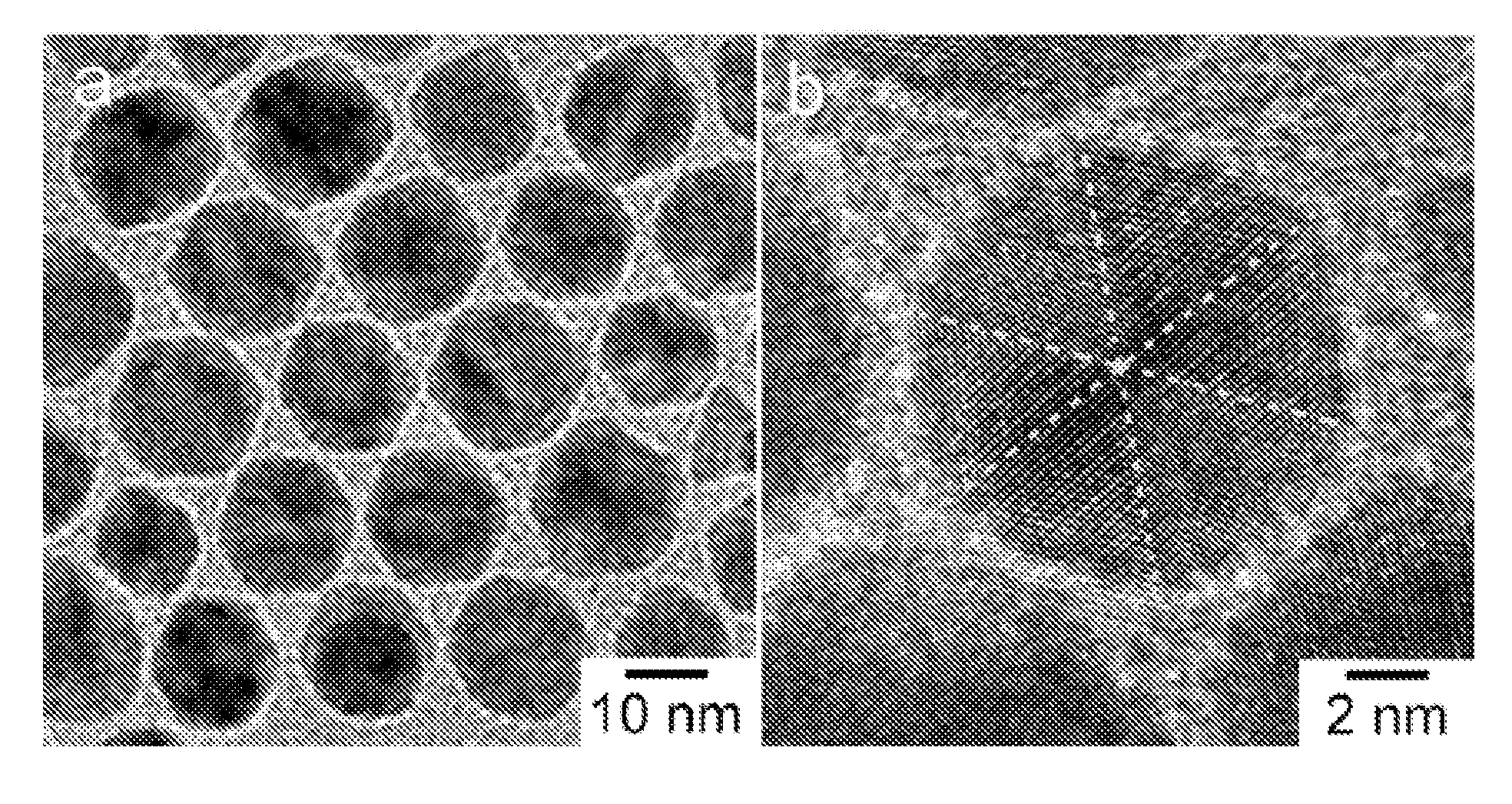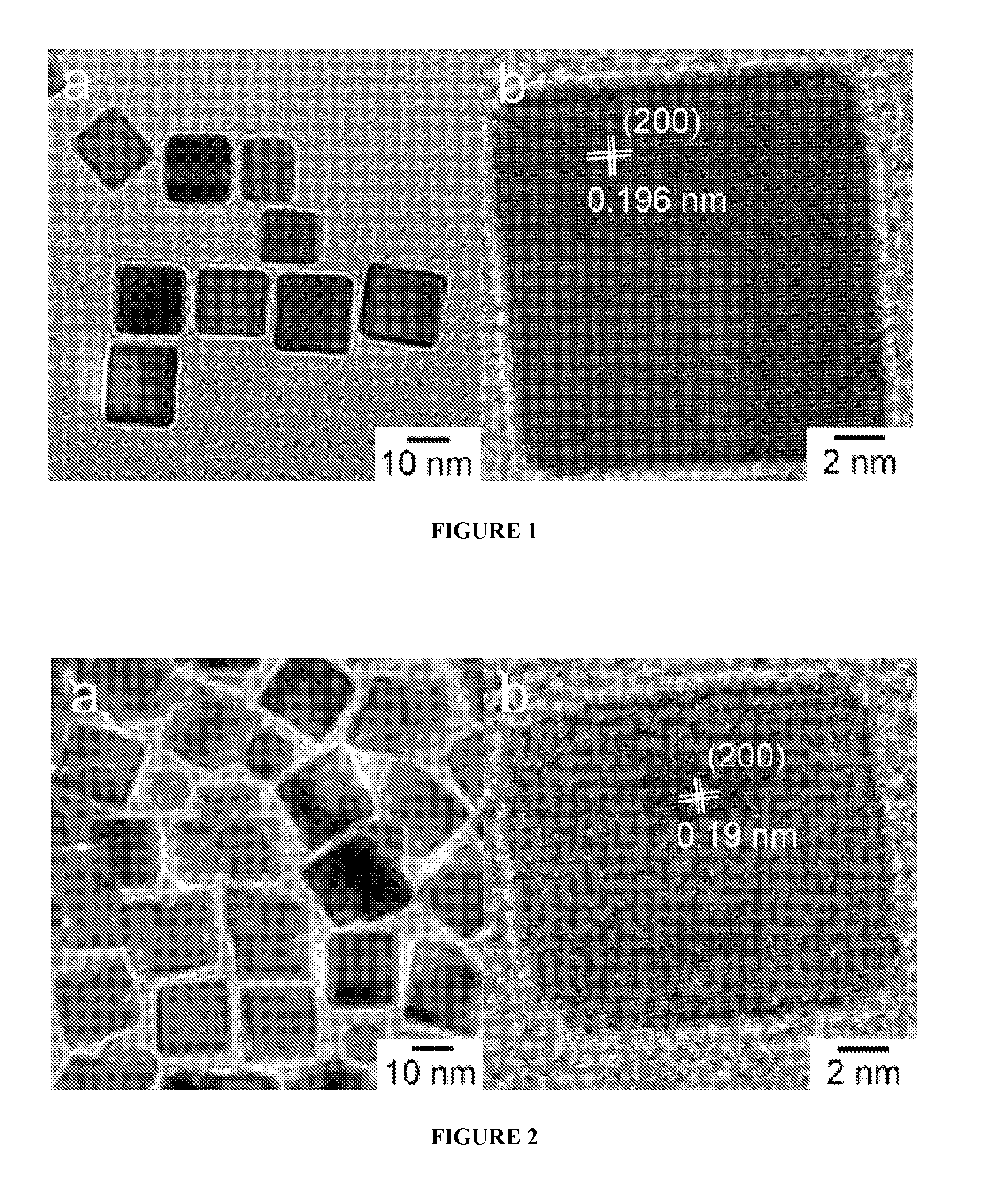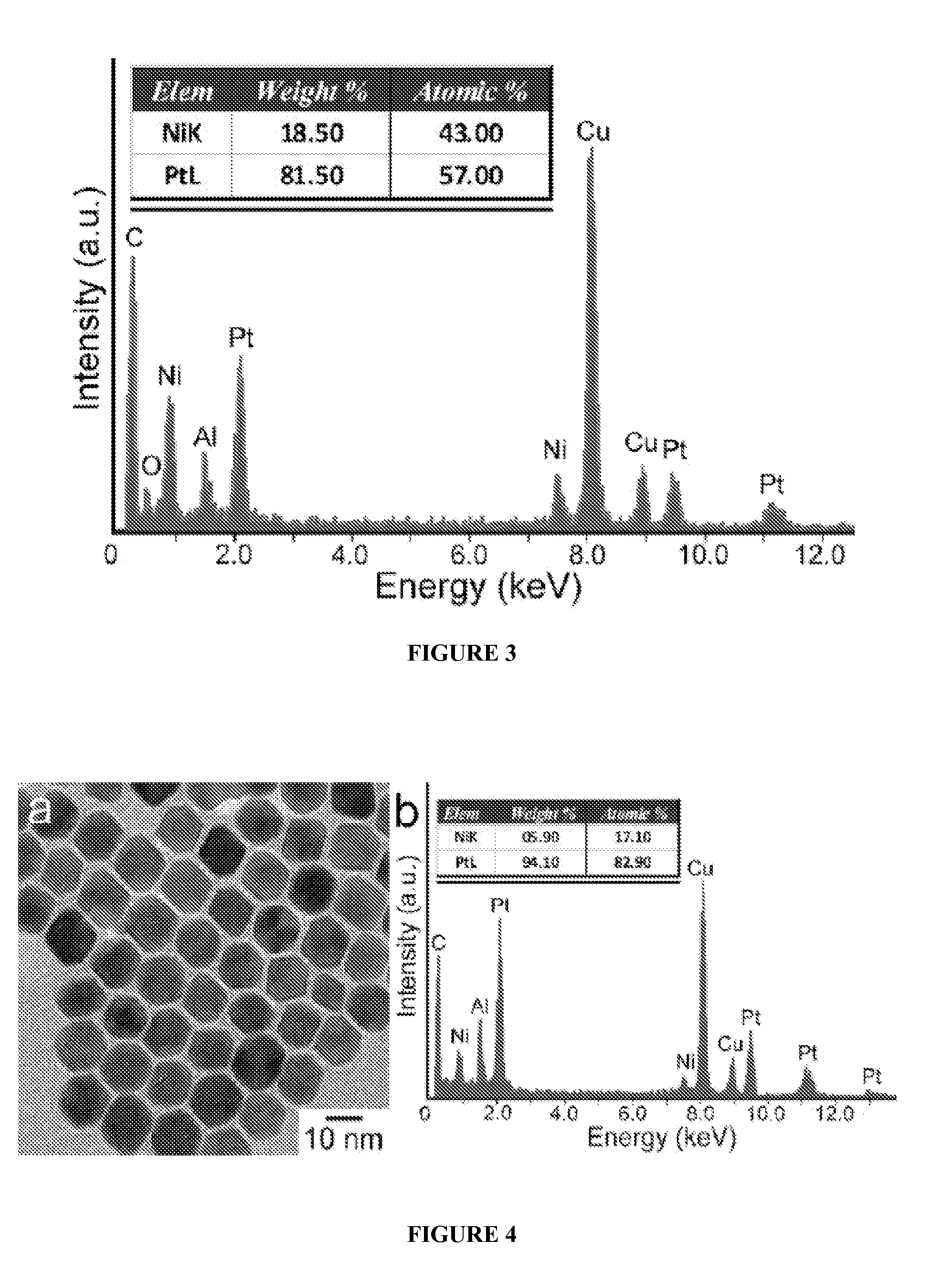Synthesis of Nanoparticles Using Reducing Gases
a technology of nanoparticles and reducing gases, applied in the field of nanoparticles and methods for making nanoparticles, can solve the problem of high cost of platinum
- Summary
- Abstract
- Description
- Claims
- Application Information
AI Technical Summary
Benefits of technology
Problems solved by technology
Method used
Image
Examples
example 1
Synthesis of Platinum Cubes
[0113]In a standard procedure, Pt(acac)2 (20 mg or 0.05 mmol), oleylamine (OAM) (9 mL) and oleic acid (OA) (1 mL) were mixed in a 25 mL three-neck round bottom flask equipped with a magnetic stirrer. The synthesis was carried out under argon atmosphere using the standard Schlenk line technique. The reaction flask was immersed in a glycerol bath set at 130° C., and the reaction mixture turned into a transparent yellowish solution at this temperature. The flask was then transferred to a second glycerol bath set at a designed temperature at 230° C. under CO gas at the flow rate of 190 cm3 / min. The reaction time varied from 30 minutes to 160 minutes. The nanoparticles were separated by dispersing the reaction mixture with 8 mL of hexane and 10 mL of ethanol, followed by centrifugation at 5000 rpm for 5 minutes. This procedure was repeated three times to wash away the excess reactants and capping agents. The final particles were dissolved in hexane for further ...
example 2
Synthesis of PtNi Cubes
[0116]In a standard procedure, Pt(acac)2 (13.3 mg or 0.033 mmol), Ni(acac)2 (8.6 mg or 0.033 mmol), oleylamine (OAM) (9 mL) and oleic acid (OA) (1 mL) were mixed in a 25 mL three-neck round bottom flask equipped with a magnetic stirrer. The synthesis was carried out under argon atmosphere using the standard Schlenk line technique. The reaction flask was immersed in a glycerol bath set at 130° C., and the reaction mixture turned into a transparent yellowish solution at this temperature. The flask was then transferred to a second glycerol bath set at a designed temperature at 210° C. under CO gas at the flow rate of 190 cm3 / min. The reaction time varied from 30 minutes to 160 minutes. The nanoparticles were separated by dispersing the reaction mixture with 8 mL of hexane and 10 mL of ethanol, followed by centrifugation at 5000 rpm for 5 minutes. This procedure was repeated three times to wash away the excess reactants and capping agents. The final particles were...
example 3
Synthesis of Pt3Ni Truncated Octahedra
[0119]In a standard procedure, Pt(acac)2 (20 mg or 0.05 mmol), Ni(acac)2 (4.29 mg or 0.0167 mmol), oleylamine (OAM) (9 mL) and oleic acid (OA) (1 mL) were mixed in a 25 mL three-neck round bottom flask equipped with a magnetic stirrer. The synthesis was carried out under argon atmosphere using the standard Schlenk line technique. The reaction flask was immersed in a glycerol bath set at 130° C., and the reaction mixture turned into a transparent yellowish solution at this temperature. The flask was then transferred to a second glycerol bath set at a designed temperature at 210° C. under CO gas at the flow rate of 190 cm3 / min. The reaction time varied from 30 minutes to 160 minutes. The nanoparticles were separated by dispersing the reaction mixture with 8 mL of hexane and 10 mL of ethanol, followed by centrifugation at 5000 rpm for 5 minutes. This procedure was repeated three times to wash away the excess reactants and capping agents. The final ...
PUM
| Property | Measurement | Unit |
|---|---|---|
| temperature | aaaaa | aaaaa |
| flow rate | aaaaa | aaaaa |
| diameters | aaaaa | aaaaa |
Abstract
Description
Claims
Application Information
 Login to View More
Login to View More - R&D
- Intellectual Property
- Life Sciences
- Materials
- Tech Scout
- Unparalleled Data Quality
- Higher Quality Content
- 60% Fewer Hallucinations
Browse by: Latest US Patents, China's latest patents, Technical Efficacy Thesaurus, Application Domain, Technology Topic, Popular Technical Reports.
© 2025 PatSnap. All rights reserved.Legal|Privacy policy|Modern Slavery Act Transparency Statement|Sitemap|About US| Contact US: help@patsnap.com



